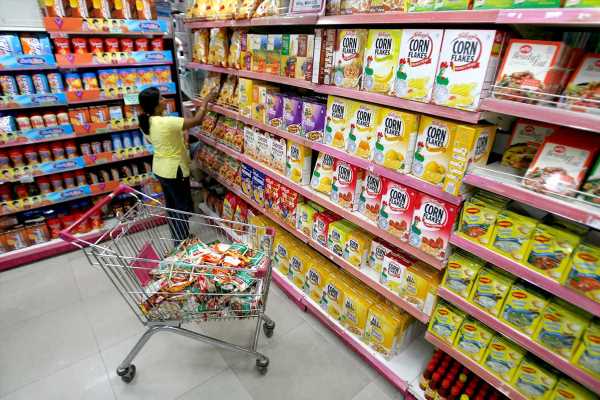If a product claims to be ‘Made with Natural Ingredients’, this may mean that one ingredient is natural.
However it does not mean the product is 100% natural, cautions Pavitra K, lead, new product development, True Elements.
We live such busy lives that we don’t realise how fast a day, week or even a month goes by.
While most of us focus on working out, eating healthy and trying to live a healthy balanced lifestyle, the real question is: Are you sure the products you eat are really clean and healthy?
Are you sure about what goes into the products you consume, besides the ingredients that are highlighted in the photographs and advertisements?
Are you just convinced by the front packaging of a food product that is made to persuade you?
There is a lot that goes into a product than what you are mostly aware of. And most of that information is in its label — whether it is in the nutritional table or the ingredients list.
Here’s a checklist of things you need to look for before purchasing a food product.
What are labels?
Labels include information about the product, its ingredients, nutritional value, quantity and quality.
Labels are basically communication on the packaging that helps the consumer make informed decisions by educating them about the product.
How to read labels and what to look out for?
The front packaging of a product can be very misleading.
Brands will advertise ‘NO SUGAR’, but the nutritional table will tell you a whole other story.
These ingredients go by other names that may confuse the consumer.
This is why it is important to pick and trust brands that do not use jargon and provide food that does not lie to you.
If you don’t know how to read labels in packaged food, here are a few things you need to note!
1. Sodium
Excess sodium can damage kidneys, leading to water retention in the body and subsequent organ damage.
Throughout the day, you will be consuming multiple products that have sodium in them, in bits and pieces and eventually it may cross the limit.
Some brands remain true to you and declare these values. Read the pack label to cross check.
2. Calories from Fat
Total fats found in food are either saturated (harder fats increases the risk of heart disease) or unsaturated (softer fats are healthier and breaks down easily).
Brands must declare these values split up, on the back of pack. Be clear on what kind of fats you are consuming.
Find out if your brand speaks of saturated/unsaturated fats.
3. How much Sugar
Does your brand tell you naturally occurring sugar vs. added sugar?
Fruits, when added in the freeze-dried form, come with no added sugar.
In certain foods, refined sugar, unrefined raw sugar, beet sugar, cane sugar may be mentioned.
While refined sugars are the bad guys, honey and jaggery are natural sugars that are least processed and come with added minerals as a health benefit.
4. Look for whole grains
Whole grains refer to the grain intact with the outer covering, with the fibre portion retained.
Whole grains have higher nutritive value than refined grains. They are good for digestive health.
The Whole Grain Council is a body that certifies food products for the presence of whole grains. Do check out for a logo to ensure the product you’re buying is authentic.
5. Multigrain claim
When a product is designed to be ‘multigrain’ it makes sense to include the right combination of whole grains that will give you health benefits and a boost in fibre content.
Verify if the ingredient list. If you see repetition of ingredients — for example, broken rice and rice cannot account for 2 different grains in a multigrain product.
A few brands may trick you into believing that the product has multiple grains.
6. Made with natural ingredients
If a product claims to be ‘Made with Natural Ingredients’, this may mean that one ingredient is natural. However it does not mean the product is 100% natural.
A product can always be made with both natural and synthetic ingredients in combination, and continue to claim ‘Made with Natural Ingredients’.
Synthetic ingredients are known to be detrimental to health in the long run. So read the label carefully to know what went into making the final product.
7. Baking Soda
Baking powder and baking soda — these are villains that can affect your stomach and overall health, leading to bloating and gastric issues.
While they are added for fluffiness and spongy texture, this shouldn’t come at the cost of your health.
8. Enriched-with
If you find claims like ‘Enriched with’, ‘High in’, or ‘Rich source of’, please check if these match certain amounts of nutrients present in the product.
For instance, unless a certain amount of Vitamin E source (for example, almonds) is added to the product (more than what is necessary for taste), the claim ‘Enriched with Vitamin E’ cannot be made on the product label.
9. Artificial colours
Studies have linked artificial colours with hyperactivity in children below 6 years of age, and with cancer in adults.
Synthetic colours silently eat into your lifespan.
If labels, ingredients, or nutrition information are confusing, reach out to the manufacturer and raise your queries.
The best way to consume food products that have 0% chemicals, 0% preservatives, and 0% jargons is to find brands that have a clean label and are 100% wholegrain certified.
Since international organisations have extremely strict criteria on product assessments, this will assure you that what you see is what you get.
Your No Added Sugar Muesli will have no sugar and your Multigrain Dosa Mix will have the power of several multigrains.
To live a healthier tomorrow, eat healthy, stay hydrated and be true to yourself!
Source: Read Full Article


